NieR Replicant ver.1.22474487139… on PS4
“A red dragon falls from the heavens… Ah, that memory has been lost. A shame. It was a favorite of mine…”
Partway into NieR Replicant ver.1.22474487139… (to be referred to as simply NieR Replicant from here on out), you encounter a tree of dreams within a mystical forest. It holds all memories of the world, both inane and important, and the action-RPG suddenly turns into a text-based visual novel where you must solve riddles to proceed.
It’s strange to think that just six years ago, NieR was nothing but a long forgotten memory. Released to lukewarm reception on the PS3 and Xbox 360, the game’s tenuous tie to one of the endings of the first Drakengard game (an absolute nightmare to play, by today’s standards) kept fans of that series interested, but NieR belonged in the unfortunate category of PS3/360 games where the environments and textures just looked dull and muddy. The combat was repetitive and janky, the fetch quests were relentless, and while critics did recognize its unique narrative potential, NieR just wasn’t all that fun to play.
Then, out of nowhere, NieR: Automata became a thing. Backed by PlatinumGames, Automata went on to garner praise from every outlet you could think of —ours included— and drew in millions of new fans to creator Yoko Taro’s bizarre world. Thanks to the surprising runaway success of Automata, Square Enix and developing studio ToyLogic have gone back to its uglier predecessor with the intention of making it prettier, and re-releasing it to both veterans and newcomers.
I realize that I’ve spent a lot of time simply describing the tumultuous history of this game, but I feel it’s important to recognize why this remaster, or “version upgrade” as Square Enix calls it, has come to fruition in 2021, and why the original was so overlooked during the PS3/360 era. The fact of the matter is that NieR was reduced to nothing but a beloved cult hit that only lived in the memory of its most hardcore fans for a good reason: it just wasn’t fun to play.
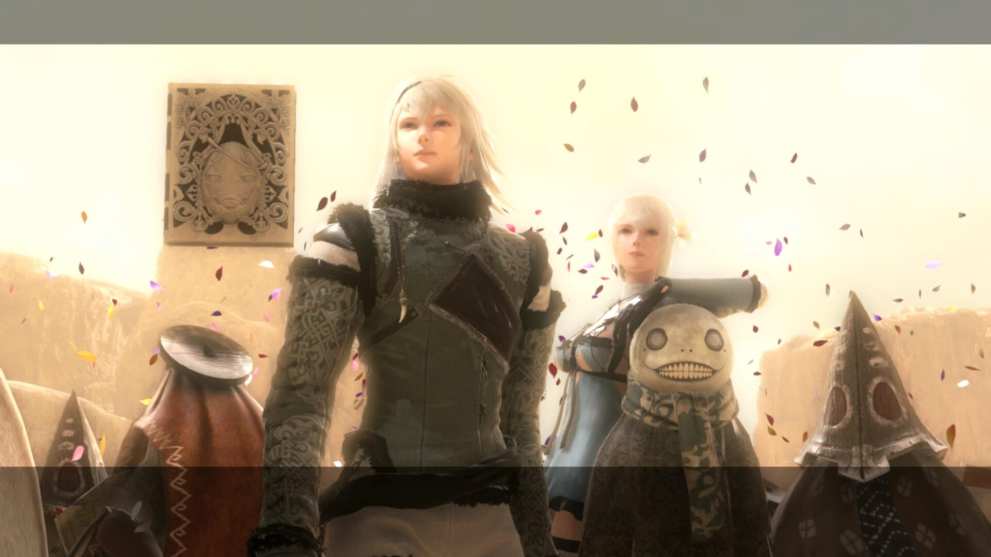
With this new release of NieR Replicant, some of its core flaws are still present, but it finally feels like this game is getting the treatment it deserves and truly lives up to its full potential as a result.
One of the biggest changes between Replicant and the original NieR is the change in protagonist; whereas the original NieR Gestalt featured an older protagonist as Yonah’s father, Replicant features the originally Japan-only older brother protagonist instead. The protagonist is younger, a little more naive, and feels a bit familiar to anyone who’s played a Final Fantasy game. If you’ve played the original game, you’ll instantly feel the shift in dynamic between the protagonist and Yonah.
After all, the relationship between a father and daughter is extremely different from that of a brother and sister. I consider myself to be a huge sucker for the father-daughter dynamic, but brother Nier’s mannerisms instantly endeared him to me as well, thanks to the voice talents Square has picked up for him. Zack Aguilar lends a sweet, boyish charm to the younger version of the character, while FFXV’s Ray Chase makes the older version sound just a tad harsher, but never losing that trace of sweetness and naïveté that makes him so likable in the first place.
Almost all dialogue lines in this game are now fully voiced, and the original cast has returned to redo their lines. You don’t have to play this game for more than a couple hours to see how good and immersive the voice acting is, but it’s worth bringing up anyway. Liam O’Brien still retains that air of smarmy smugness as Grimoire Weiss, while Laura Bailey and Julie Ann Taylor bring Kaine and Emil to life with incredible depth and emotion.
It’s not just the voice lines that have been touched up, it’s the character models as well, and nowhere is this improvement more obvious than with Kaine. As one of the most compelling characters in the game, she looks far more expressive in NieR Replicant, and her important story beats are presented more effectively because of that. Kaine’s been through some shit, and it’s easy to see when her tough girl veneer starts to crack, revealing a broken, more vulnerable side to her.
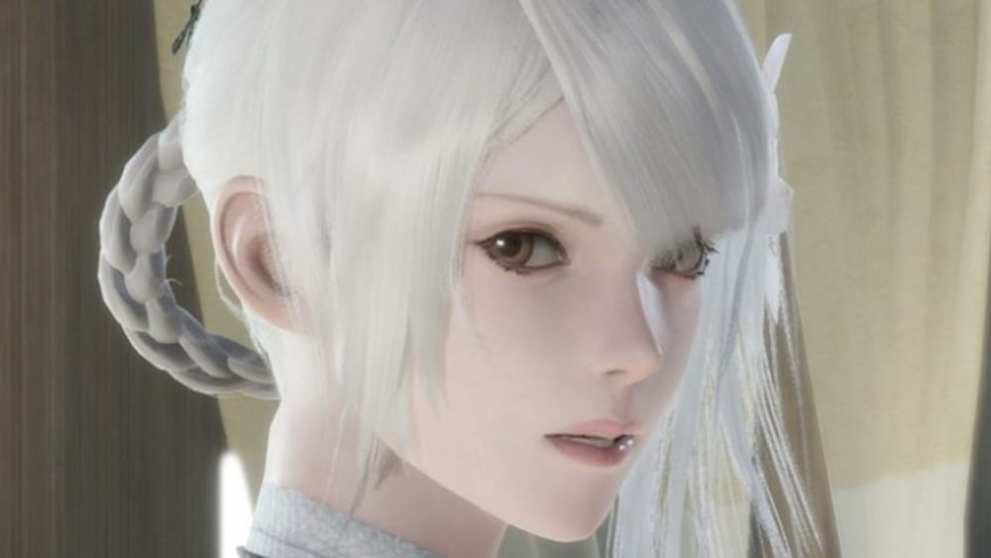
Coming back to NieR Replicant just served as a reminder of how strong the main cast of characters is. They’re more emotional, more human, and more relatable than the androids of Automata. This isn’t a knock against 2B, A2, and 9S, but the cast of Replicant is just fantastic and it’s not even close. Everyone plays off one another in a beautiful group dynamic that you’ll grow attached to in just a few short hours, and Replicant’s more traditional RPG format definitely helps to cultivate that tight-knit party feeling that you get over time.
The story also withstands the test of time, as every twist and turn still feels powerful and emotionally devastating. NieR Replicant is subtle in its writing most of the time, and this is a game where you can usually tell what the characters are thinking without needing them to say it out loud. The shortest exchanges can reveal new sides to a character you’ve never thought about, or even hint towards future plot beats that will make sense once you get to them.
I can’t praise the writing and storytelling enough in NieR Replicant. It still holds up incredibly well after a decade, it’s nuanced and helps to lay down the groundwork for future character and story development, and it still carries that same self-assuredness that helped it stand out from the pack all those years ago. It twists the morality of its major characters in a way that can feel frustrating and complex, and it never makes things easy on the player. Past a certain point, you’re always questioning what you’re doing, what the game is doing, and where the story is taking you, which just makes this game feel that much more special.
The soundtrack holds up well, too, as composer Keiichi Okabe and his team at Monaco have returned to remaster the music for NieR Replicant. I could honestly go on for hours about how beautiful the music is, but suffice it to say that Replicant’s soundtrack is still going to be one of the most beautifully depressing things you’ve ever heard. Just like in Automata, Replicant makes use of simple audio layering and tricks to make the music, and in turn the environment, feel dynamic.
Simple things like the lyrics of a song kicking in when you approach Devola in the village, and having it fade out as you wander away makes the game feel more immersive. Or the way the instruments start to layer on top of each other as you delve deeper into a dungeon, and you’re treated to the full weight of a track by the time you’re ready to face the boss of that area. The original game wouldn’t be half as beloved as it was a decade ago if it wasn’t for the soundtrack, and the same holds true here.
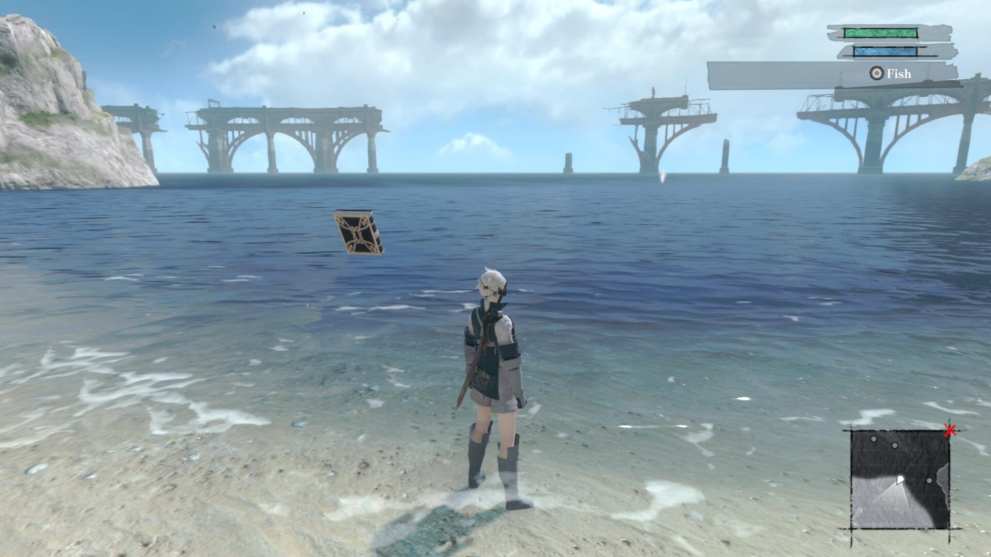
Gameplay-wise, NieR Replicant also feels better than ever. It’s certainly not Platinum levels of smooth and stylish, but Toylogic has done a great job of making the combat feel way less janky than it did on the PS3 and 360. The protagonist is human, but he moves like a YoRHa unit from Automata and can pull off cool dodges and zip around an enemy’s back to slash at them. The heavier weapons do still feel a little clumsy and the two-handed swords are still my least favorite of the bunch, but you can pull off some seriously stylish combos in Replicant now.
And lest I forget, Toylogic has also added a lock-on function to NieR Replicant, which is just a godsend considering how much you’re gonna be using Grimoire Weiss to fire magical bullets at your enemies.
Unfortunately, that officially exhausts most of the praise I have for this game, as we must now discuss the flaws that are still present here. The original release was plagued with banal fetch quests, and that’s still true in Replicant. There’s also still no easy way to track your quests on your map or mini-map, so you’re constantly having to refer to your journal to check your progress and objectives.
The lack of a tracker honestly wouldn’t bother me so much if the bulk of the fetch quests were at least interesting. Automata rectified this problem by dressing up its fetch quests with fascinating NPCs and compelling side stories, but Replicant is just full of random collection quests that are there for the sake of padding out the game’s length.
There is still some joy to be gleaned from the side quests, though, as there is a small handful of them that do feature fascinating characters and stories, but they’re just way too few and far between for me to forgive the onslaught of fetch quests that Replicant throws at you.
NieR Replicant’s dungeons don’t hold up particularly well either, especially as the game forces you to go through some of them multiple times. One in particular is a series of gimmicky puzzles that’s interesting at first, but quickly wears out its welcome as it drags on for too long, while another is a long run down a series of hallways with robots getting thrown in your face at every turn.
The one exception to this rule is the new dungeon that’s been added to this version of NieR Replicant. Without spoiling too much of its contents, this new story chapter takes place in a shipwreck off the coast of Seafront, and is adapted from a short story in Grimoire Nier, a Japan-exclusive lore book about the game. As you might expect, there’s yet another heartbreaking side story to experience here, and the ambience of the dungeon is delightfully creepy and unsettling, culminating in a great boss fight that feels right at home in the world of NieR Replicant.
The base game boss fights themselves have puzzle elements to them as well, and those are still extremely fun, but the lead-up to said boss fights are usually a slog.
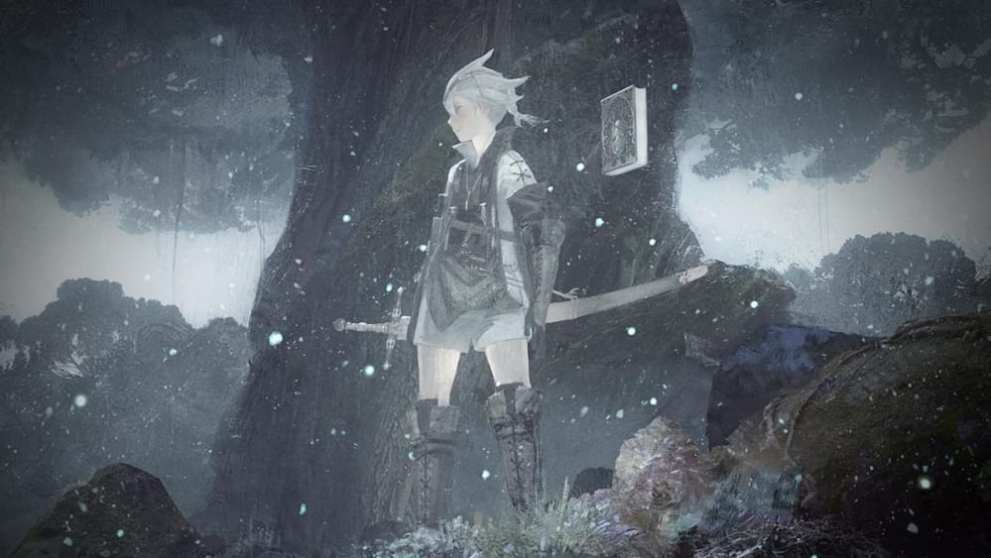
It’s a good thing, then, that even though NieR Replicant demands that you replay parts of the game multiple times in order to see its true ending, it offers good replay value. After beating the game the first time, you can replay it and be treated to a variety of new scenes and even gain new perspectives on the events of the main story. Things go by much faster on subsequent playthroughs too, as you’ll carry over all your weapons, items, and levels, so it’s easy to power through the game to get to the new stuff you haven’t seen yet.
Getting to see all of the endings is still a bit of a grind, but the payoff is still worth it, especially as there’s some new content to look forward to in this aspect of the game.
Playing through NieR Replicant felt like a fever dream at times, in the same way that NieR: Automata’s reveal at the very first E3 I’d attended felt like a fever dream. It’s a testament to how special NieR is for it to have endured solely in the hearts and minds of its most dedicated fans for a decade, only to explode into a phenomenon that has kept the video game community talking and debating over it long after the credits have rolled. The rough edges of the original release are still present in NieR Replicant, but it’s clear that this game and the series as a whole will no longer just be another faded memory.
- The character models and environments have been touched up, and the game looks so much more beautiful now.
- The story and main cast are still strong and memorable.
- The soundtrack is still beautifully depressing.
- The writing and storytelling is nuanced and compelling.
- The new content is well worth the double dip for longtime fans.
- Fetch quests still suck.
- Bit of a grind to unlock all of the main story endings.
- Dungeons still tend to drag and can overstay their welcome.

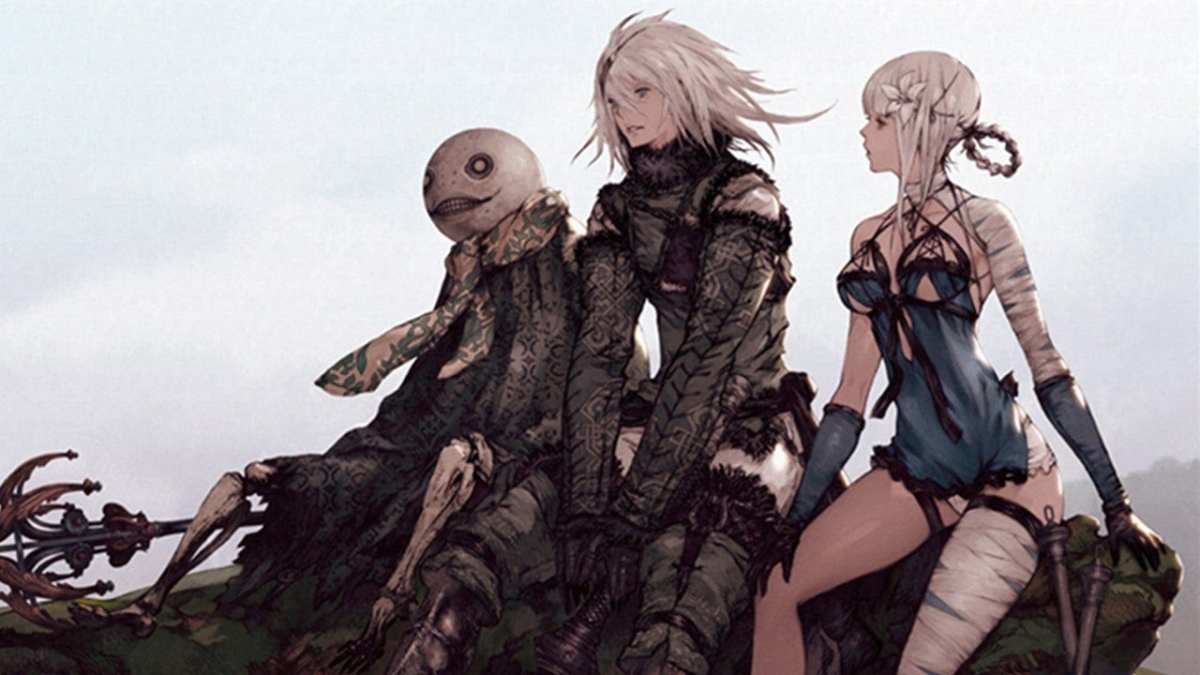










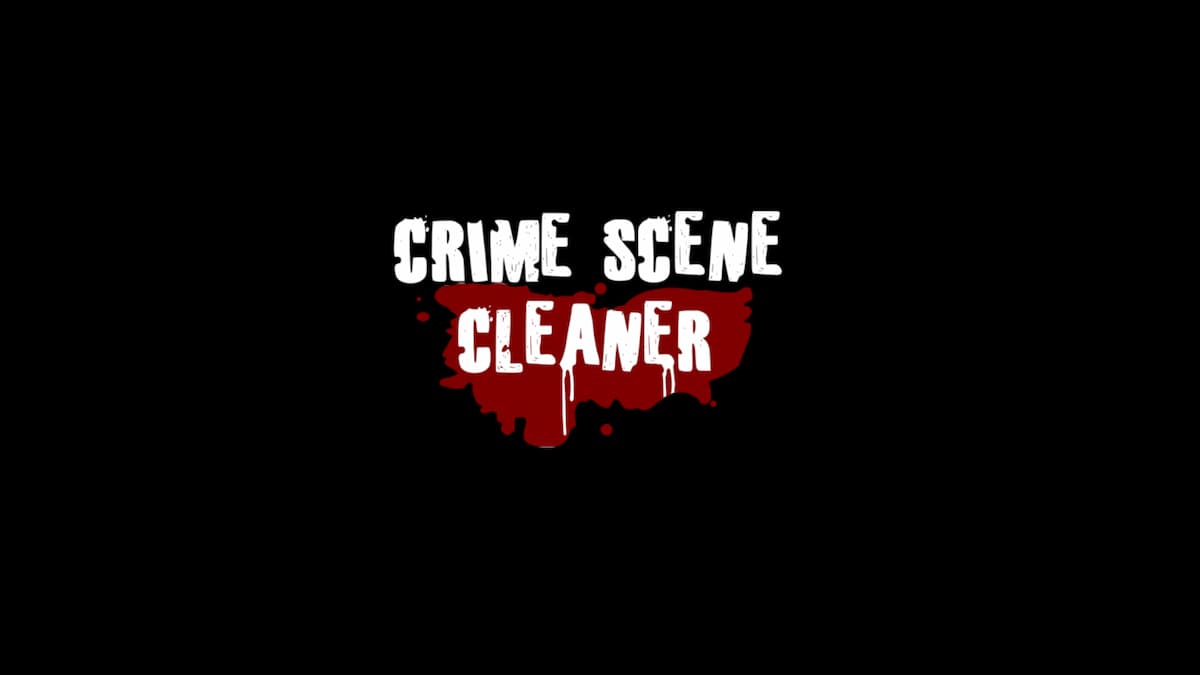
Updated: Apr 22, 2021 12:59 am